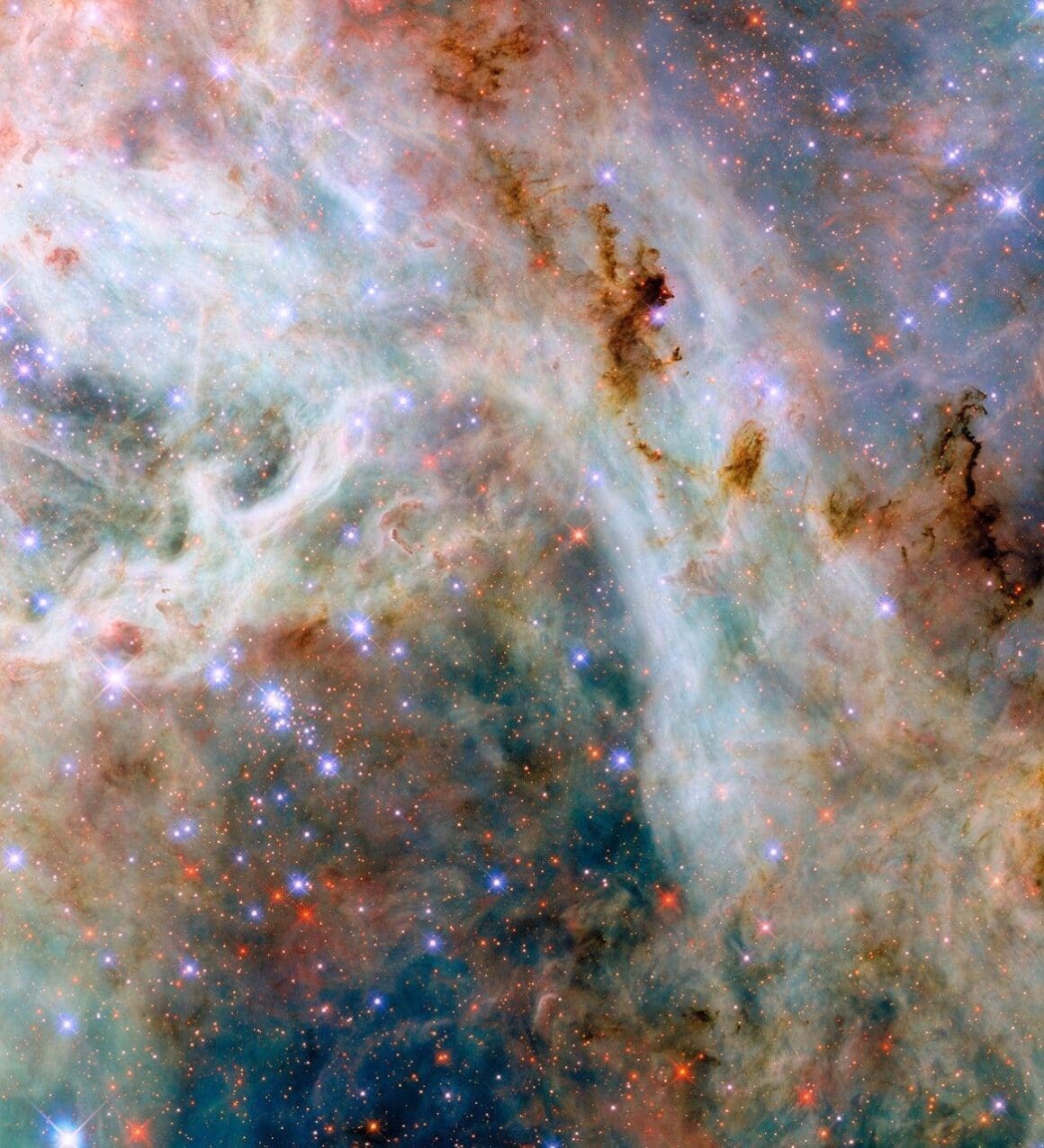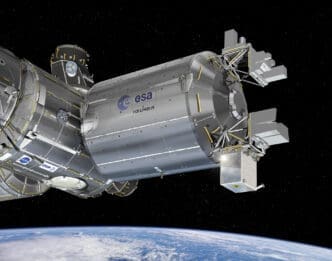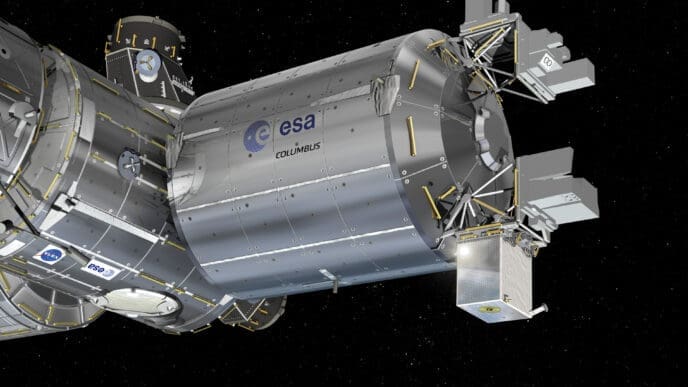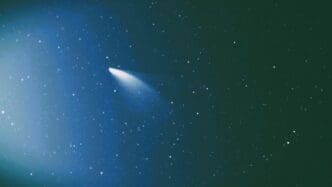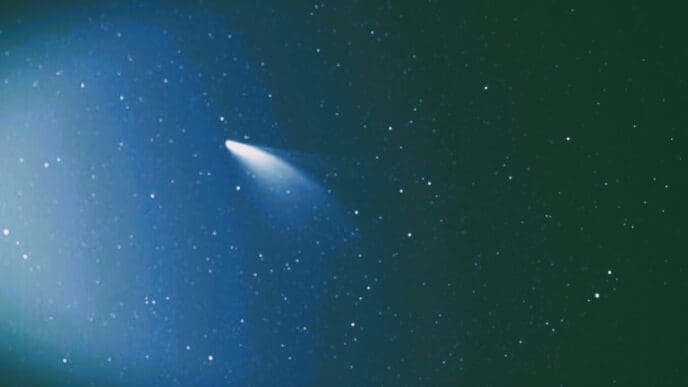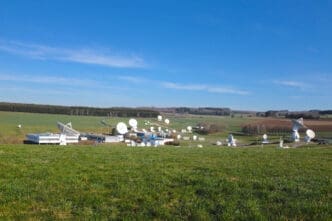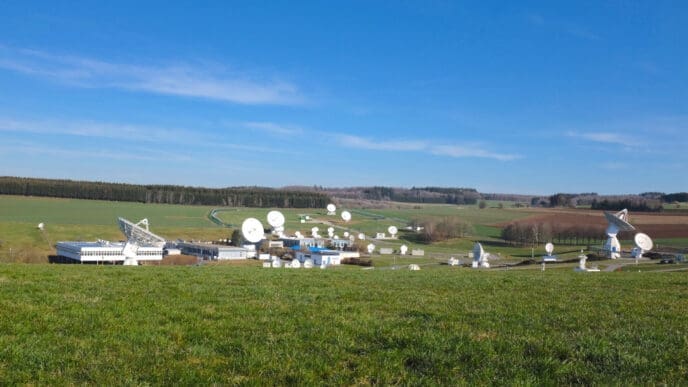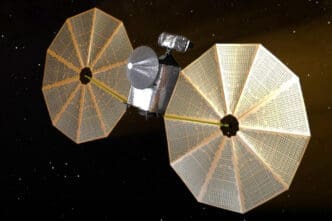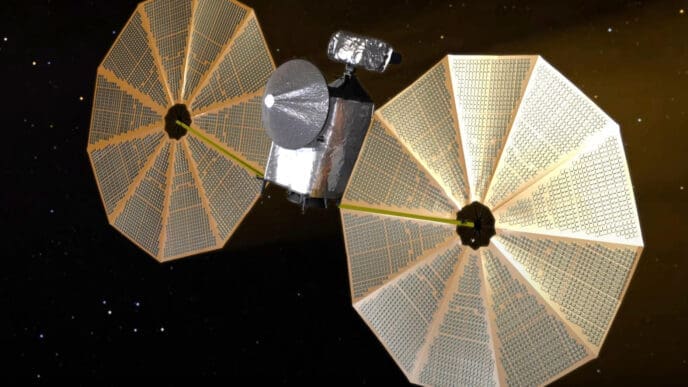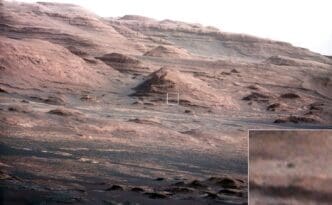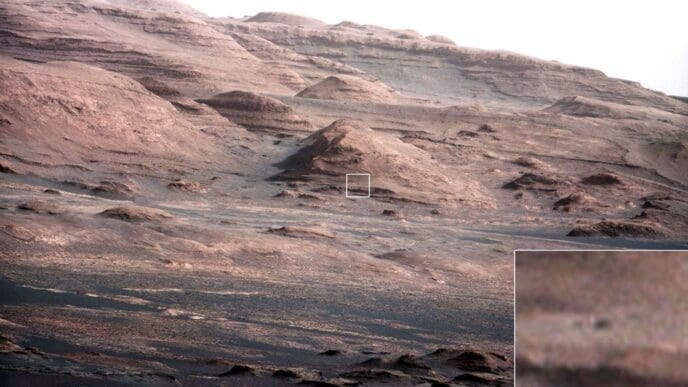The universe is full of wonders and secrets. From far away, the Hubble Space Telescope captures a remarkable view of gases and dust near the Tarantula Nebula. This image shows swirls in the cosmos that invite you to look closer. With every glance, there’s something new to uncover.
Discovering the Tarantula Nebula
Nestled in the Large Magellanic Cloud, about 160,000 light-years from us, the Tarantula Nebula is a sight to behold. Known as a bustling region of star formation, it’s home to some of the universe’s most massive stars. The nebula’s vibrant clouds mix color with mystery, creating a picture rich with potential discoveries.
The Unique Properties of Cosmic Dust
Cosmic dust differs vastly from the kind gathering on your shelves at home. It’s mostly carbon and silicates. This dust, while tiny, plays surprisingly important roles in our galaxy. From cooling gases to forming new stars and planets, these particles are dynamic contributors to cosmic events.
In this image, dust clouds are seen mingling with gas, offering insights into where stars are born. These cosmic particles create platforms for atoms to meet and bond. As this happens, they lead to the formation of new molecules, driving further unity among different space elements.
A Closer Look at Hubble’s Observations
The Hubble Space Telescope has revolutionized our view of space, bringing unprecedented detail to light.
This image was gathered through an observing program designed to study the properties of cosmic dust in the Tarantula Nebula. Each swirl and clump in the image represents a piece of a larger puzzle, tempting astronomers to delve deeper.
By illustrating these formations, Hubble helps scientists piece together stories written in the stars. It provides a clearer understanding of nebulae and their role in forming the universe’s structures.
Star Formation in the Nebula
Stars are born among the swirling tendrils of the Tarantula Nebula.
With stars forming at a rapid pace, this nebula is like a stellar nursery.
The process of star formation in such environments offers clues into the lifecycle of the universe, hinting at the constant state of creation and transformation that defines the cosmos.
Hubble’s Role in Unveiling Cosmic Mysteries
For decades, the Hubble Space Telescope has served as a window into the universe’s past.
Through its lens, the telescope has captured celestial phenomena that were once beyond human sight. Displaying images like that of the Tarantula Nebula further demonstrates Hubble’s invaluable contributions to space exploration.
By revealing the universe’s secrets, Hubble inspires generations of astronomers and stargazers, placing science at the forefront of discovery.
The Legacy of Cosmic Observations
Cosmic dust and star formation are just part of a vast network of cosmic phenomena.
By studying these elements, astronomers gain insights into the fundamentals of our galaxy, enriching our understanding of what makes up the universe’s fabric.
The legacy of these observations informs not just science, but culture as well, as these images often translate into art and inspiration for the human imagination.
Social Media’s Role in Disseminating Discoveries
Platforms like Facebook and Instagram bring the universe to your fingertips.
[instagram-embed-display instagram_id=’DGDs5RKzsVy’]
@NASAHubble shares these fascinating images with a global audience, furthering public interest in space exploration.
Social media transforms the way people experience the universe, making these cosmic marvels accessible to anyone with a screen in hand.
Hubble’s views continue to transform our understanding of the universe. The cosmic cloudscape, with its intricate dance of dust and stars, reminds us of the boundless wonders of space. As we delve deeper into these cosmic mysteries, our appreciation for the universe only grows.


